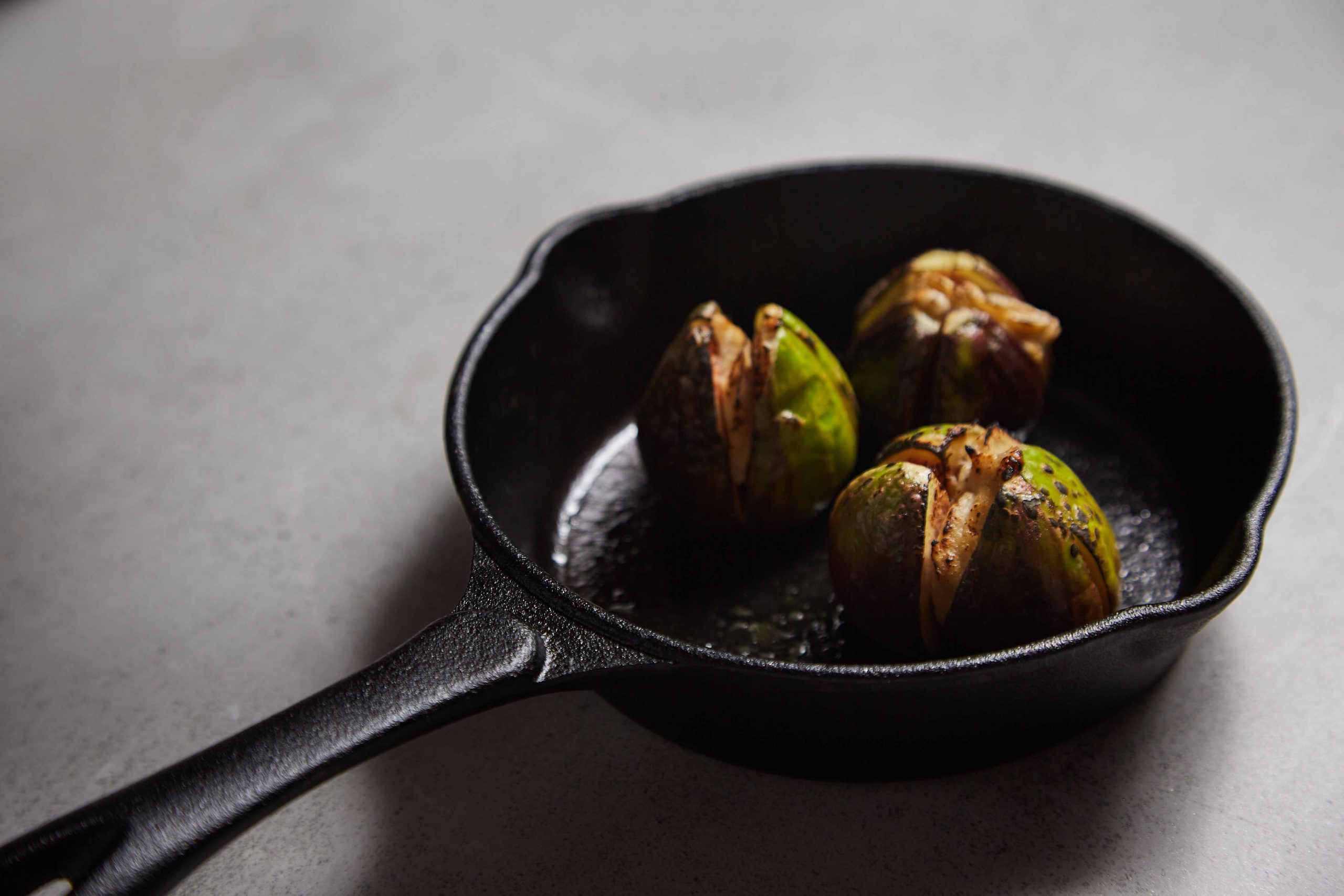I wasn’t sure how to start this article. I’ve been listening to Nina Simone a lot recently. The little ear worm of a song is scratching the inside of my head: “Oh Lord, please don’t let me be misunderstood.” Although it’s original by The Animals—very fitting when the topic is environmentalism and habitat loss—Nina Simone’s is the ultimate version of that song.
I didn’t know how to begin this article. There. I just did.
The Uncomfortable Position
As a plant-based chef running a restaurant in London, I should be shouting about our minimal restaurant environmental impact. My business focuses on sustainable, plant-based food with efficient waste management—exactly what you’re told will save the planet.
But it’s not that simple. It never is.
So let’s start with the uncomfortable truths.
Understanding Real Restaurant Environmental Impact
London’s restaurant scene is drowning in environmental claims that don’t add up. I see plant-based restaurants promoting themselves as “eco-friendly” while running gas-powered kitchens and importing quinoa from Peru. Meanwhile, traditional restaurants with local sourcing and efficient operations stay quiet about their smaller actual footprint.
The problem is that many diners take these surface claims at face value. Ordering the “green” option feels like doing the right thing, and makes it easy to assume moral higher ground. But that’s just comfort theatre. And it’s tempting to believe that a menu choice alone can carry moral weight.
Environmental impact isn’t solved by virtue-signalling menus or marketing slogans. We can’t dream our problems away—we have to face them with real data, facts, and a pragmatic approach.
Sustainability isn’t a badge you wear—it’s a system of practices that runs deeper than marketing. To understand the real impact, we need to look past the slogans and start asking harder questions about how food is sourced, cooked, and managed.
The Nutritional Math They Won’t Discuss
You’ve heard the standard argument: “producing one kilogram of beef emits 60 kilograms of greenhouse gases, while peas emit only 1 kilogram.” This sounds clean, but it crumbles under scrutiny when you look at nutritional value.
What they won’t tell you is that 90% of metabolites differ between plant-based meat alternatives and actual beef, despite similar Nutrition Facts panels¹. To replace beef nutritionally, you need multiple plant ingredients—110g spinach for iron, 100g lentils for protein, 57g pumpkin seeds for zinc, 28g sunflower seeds for selenium, plus B12 supplements.
Each ingredient has its own carbon footprint, and a well-planned plant-based diet requires a greater total mass of food to achieve equivalent nutrition. Of course, no single food supplies everything—we all combine foods. The point is that bioavailability and density change the equation more than simple comparisons suggest.
More critically, research shows iron absorption from plant-based meals is only 4% compared to 22% from beef². When environmental footprints account for actual nutrient density and bioavailability, the carbon advantage of plant foods becomes much smaller.
The Quinoa and Avocado Destruction
Let me address the ingredients we’re told are environmentally virtuous:
Quinoa
The environmental impacts of quinoa production have risen sharply due to demand. Studies show that a focus on high yields due to international demand has driven intensive farming practices that reduce eco-efficiency to just 18% in industrial production areas due to excessive fertiliser use and soil erosion³.
The boom, driven by international demand, has led to unsustainable farming practices in many regions of Peru.
Avocados
In Michoacán, Mexico, where most avocados for the global market are grown, avocado production drives 30-40% of deforestation⁴. A single avocado tree consumes 50-60 litres of water daily versus 11 litres for a native pine tree. The industry uses 9.5 billion litres of water daily—equivalent to 3,800 Olympic pools⁵.
While this is specific to industrial-scale production in one region, it highlights the danger of uncritically labelling a food as “green.”
This doesn’t mean all quinoa or avocado is unsustainable, but it shows how global demand can distort farming systems.
The Ultra-Processed Plant Problem
The companies marketing fake meats as environmental saviours commission their own studies—a practice “susceptible to conflicts of interest” according to UC Berkeley researchers⁶. Independent scientists struggle to replicate company findings, and much existing research is funded by the companies developing these products⁷.
When independent studies examined plant-based burgers in vegetarian diets, greenhouse gas emissions actually increased by 3-17%⁸.
But here’s the deeper problem: these ultra-processed alternatives are nutritionally impoverished compared to the whole foods they claim to replace. Despite fortification attempts, they lack the complex nutritional matrix of real foods, forcing consumers to source missing nutrients from additional foods—each with their own environmental footprint.
The environmental impact compounds when people need to eat more total food to achieve equivalent nutrition.
I’ll explore this fake meat nutritional deception in detail in a future article. For now, the takeaway is clear: industrial food processing doesn’t become virtuous just because the inputs are plants.
The Real Solutions: Beyond the Menu Wars
Menu choices are all nice to debate. You can hold onto your ideological jersey, on your end of the stands, and shout at the other end because everything is their fault. Meanwhile, the guys with a different jersey shout back at you about how silly you are. None of that will solve the actual problems.
There are things we could be doing today that could help us take real steps forward towards a cleaner restaurant industry.
These points could be addressed today. We have the technology to do it, we have the ability to implement it. So why don’t we?
What Restaurants Can Do Tomorrow
Replace gas with induction: Switching from gas hobs and ovens to induction units can cut a restaurant’s cooking-related carbon footprint by up to 60%. EPA data confirms this reduction⁹—and it doesn’t affect anyone’s dietary choices.
Install proper extraction: Electrostatic Precipitators (ESPs) remove over 95% of grease, smoke, and airborne oil particles. When combined with Odour Control Units (OCUs), the system becomes fully efficient, releasing only clean, breathable air outside. I use them in my restaurant—they’re transformative.
What Restaurants Can Do This Year
Source locally and regionally: Reduce transportation emissions regardless of whether you’re serving plants or animals. Kent beef has a smaller footprint than Peruvian quinoa when you account for transport.
Implement comprehensive waste reduction: The UK hospitality sector discards 1.1 million tonnes of food annually. Much of this is avoidable with proper systems.
Energy efficiency audit: Beyond cooking, examine refrigeration, lighting, and HVAC systems. Small improvements compound.
The Environmental Hierarchy That Actually Matters
- Operational efficiency (controllable immediately)
- Local/regenerative sourcing (controllable with effort)
- Waste reduction (controllable with systems)
- Menu composition (important but often overstated)
In other words, if you are a vegan restaurant because you believe that would be environmentally friendly, but you still use gas stoves, then you need to rethink your priorities. Because it is possible to serve meat in an eco-conscious way and it is equally possible to be vegan and environmentally damaging. See how we shift that perspective quite nicely?
The Two-Restaurant Reality Check
To illustrate this point, let’s imagine two theoretical restaurants, one vegan and one traditional. The vegan serves tofu made with soy, quinoa from Peru, and avocado from Mexico, cooking their food with gas stoves and frying their vegan-fake-meat-chicken-nuggets in vegetable oil deep-fryers.
Let’s imagine a traditional restaurant that serves free-range organic beef grown in Kent, farmed salmon from sustainable farming in Scotland or Wales, and uses induction cooking with no fat fryer. Guess which one is more environmentally friendly? Yes, not the vegan.
Before anyone accuses me of using a strawman argument, this is an extreme hypothetical, but it demonstrates the principle: restaurant environmental impact is shaped more by operations and sourcing than by whether the menu is plant-based or meat-based.
Now, how was that song again? Right! Oh Lord, please don’t let me be misunderstood. That’s the one. I am a vegetarian chef, I am not telling you to go ahead and light that fire under that beef. That’s not what I am saying at all. What I am trying to say is that this problem is like an onion: it has layers. And peeling them back means looking past menus into the systems underneath.
Measuring Real Restaurant Environmental Impact
The planet doesn’t care about your menu’s optics. It cares about your actual impact.
If you’re serious about environmental leadership, stop using menu choices as cover for operational laziness and move beyond marketing claims and ingredient symbolism.
The most impactful changes—energy systems, waste reduction, local sourcing—are available to every restaurant regardless of cuisine.
True restaurant environmental impact comes from looking at the whole system: the gas flames in the kitchen, the supply chains behind every ingredient, the energy drawn by refrigeration, the waste we throw away. It means rejecting both industrial animal agriculture and industrial plant processing. It means choosing efficiency over ideology, transparency over marketing, resilience built into operations over ‘green’ branding, and local systems over global supply chains dressed up as virtuous.
This isn’t about taking sides in a dietary culture war. It’s about asking sharper questions and measuring impact with more honesty. Because whether you serve beef or beets, what matters most is not the story you tell—it’s the footprint you leave behind.
And if I’ve been clear enough, then maybe—just maybe—I won’t be misunderstood.
_____________
By the way, after much gentle bullying, our chef finally caved and made his own Instagram account. He’s absolutely terrible at it (imagine a capuchin monkey from Brazil trying to text back), but if you’d like to join in the chaos, go ahead and follow him. Once he figures out what all the buttons do, he promises to post more. Here’s his page:
—
Sources:
Van Vliet et al. (2021). “A metabolomics comparison of plant-based meat and grass-fed meat.” Scientific Reports.
Swedish study on iron bioavailability. Nutrients (2022).
Vanham, D., et al. (2020). “Sustainability of smallholder quinoa production.” Journal of Cleaner Production.
Climate Rights International (2024). “Mexico: Avocados for Export Fueling Deforestation.”
World Economic Forum (2020). “Avocado: the ‘green gold’ causing environment havoc.”
San Martin, UC Berkeley. Agriculture Dive (2024).
Multiple authors (2020). Frontiers in Sustainable Food Systems.
Consumer acceptance study. Foods (2022).
EPA ENERGY STAR Emerging Technology Award (2021).




